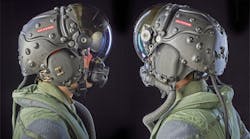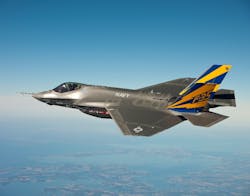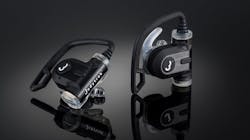Launching New Military Tech for Air-to-Ground Combat
Wearable technology is a concept growing more popular in the military and aerospace industry. New devices are getting tried and tested before rolling them out on a full scale for professional purpose. The UK military is already excited at the idea of donning wearable technology due to its potential. The UK Defence Science and Technology Laboratory (DSTL) introduced a wearable kit designed to help the troops navigate with or without GPS access.
The Dismounted Close Combat Sensor (DCCS) is designed to automatically detect threats and send information. The head gear uses inertial and visual navigation sensors combined with advanced algorithms to provide soldiers with 3D navigation when GPS signal is weak or not available. This device will also monitor a soldier’s physical condition. This is particularly helpful during action or training. The sensors can sense injury and relay medical data to medical support services.
The Smart Helmet
Military personnel can now take flight with something that is more than just a helmet. The helmet offers a plethora of information to the pilot midair. For example it will show targeting data, the status of the aircraft, night vision mode, and also comes with visual and infrared views outside the craft. Pilots with this head gear might equate to using Jarvis, the intelligent iron suit donned by Iron Man.
The pilots of the Lockheed Martin F-35 Lightning II can check the airspeed, heading, altitude, rate of climb, and information about another airplane on their helmet visors.
The helmet comes with refined technological facilities such as sensor suite, night-vision technology, line-of-sight tracking based on head movement, and targeting software. The pilots of the Lockheed Martin F-35 Lightning II can check the airspeed, heading, altitude, rate of climb, and information about another airplane on the helmet’s visor. The information on the visor is to add value without inundating the pilot or crowding the view. The cockpit avionics panel and the F-35 control stick come with a button that can help the pilots switch among three feeds.
- Real-time video of activities outside
- Thermal imagery
- Night vision
The helmet also has the ability to track the eye and head movements. By moving the head, data feed can change the real-time video outside the craft from the suite of six cameras located in strategic areas of the F-35 craft.
Getting the Perfect Fit
The smart helmet requires customization to get the tracking systems working accurately. A 3D scan is initially made of the pilot’s head. The eyes are measured using a pupilometer to align the optics package on the visor within 2 mm of the center of each of the pilot’s pupils to ensure that the image projected on his visor converges to his natural point of view.
The visor and the display feeds are adjusted during the final fitting. Technicians spend about two days to ensure that the helmet’s optical sensor is alighted to the pilot’s pupil. Finally, the helmet is measured to align with the pilot’s spine to prevent neck injuries during ejection or high-G maneuvers.
Researchers will continue to refine and redefine the way the sensor technology works. It can be evidently noted that the 3D sensor market is beginning to make its presence felt across geographies and in multiple sectors. The 3D sensor technology implemented in most industries are gaining considerable popularity and momentum. An extensive study conducted in this area of technology states that the global 3D sensor market is a multi-million dollar profit segment. Within the next five years, market leaders such as OmniVision Technologies, Infineon Technologies, LMI Technologies, Prime Sense, And Pmd technologies GmbH will begin partnering with professionals across industries and expand their market across various regions.
Bodytrak’s sophisticated ear gear will monitor vital body biometrics such as heart rate, degree of physical exertion, core body temperature, speed, and pulse.
A Revolutionary Earpiece
In addition, the UK Ministry of Defence, in collaboration with DSTL, approached BodyTrak—a wearable technology manufacturer—to develop a precision lightweight monitoring in-ear device. Bodytrak’s focus was on functionality and accuracy. The equipment can provide real-time data monitoring for various body biometrics such as:
- Heart rate
- Degree of physical exertion
- Core body temperature
- Speed
- Pulse
Apart from the military, this technology is also designed for athletes, emergency services, and the medical industry. Each body has different physical limitations. The in-ear device will collect vital body biometrics including cardiovascular responses to heat and various physiological changes and amass it into meaningful information that is actionable. Collecting a user’s data over time, software can personalize road maps to identify the user’s vulnerable points during exertions and exposure to extreme conditions.



